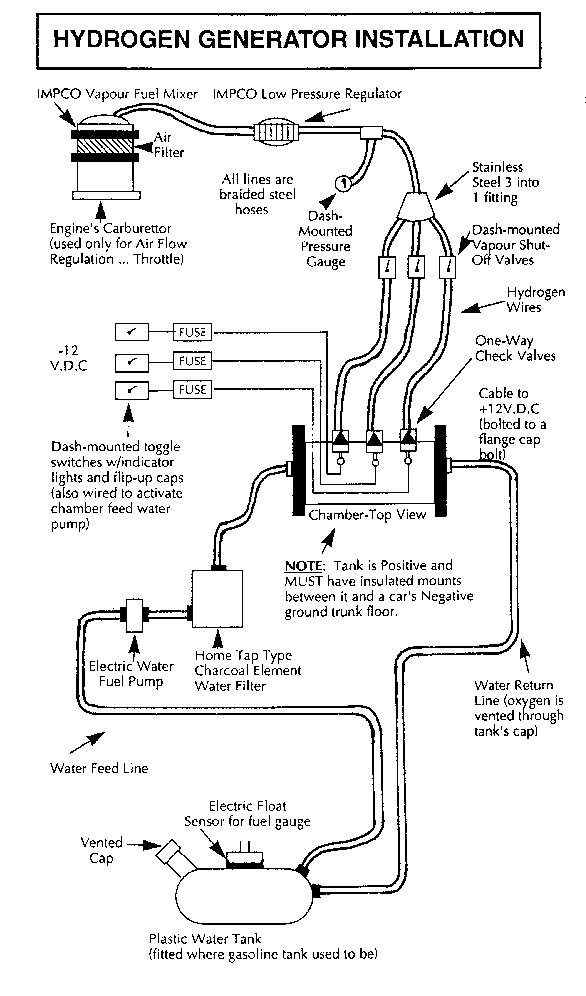Well, I'm nothing like well-educated on this, but let me throw a fly in the ointment.
Referring to a fragment of a diagram linked from
http://www.hasslberger.com/tecno/hydrogen.html :

I don't know much about making hydrogen on-the-go, but I
do know a few things about IMPCO mixers and regulators, and this won't work. The IMPCO mixer is a demand-regulated device. It
requires that the gas be available at enough pressure to assure fast delivery in response to demand, and that diagram shows no pressure reservoir (nor a mechanism to develop substantial pressure).
Also, the item called out as, "IMPCO low pressure regulator", I wonder what that is? The most common IMPCO regulators are for the LPG market and vaporize liquid propane (at a max of 250 PSI, not usually considered low pressure). These include the IMPCO Model E, Model J, and I think the Model N. The output of these is about 1.5"
negative pressure demand. That is, the mixer (replaces the carb, or sits on top of it, depending on the model and installation) provides 1.5" of draw on the vaporiser/regulator. But the input to the Model E is designed to be at the LPG tank pressure, and I don't see this diagram's design coming up to enough pressure to do any good.
Next, I'd like someone to do the work that I'm too lazy to do: run the rough calcs on how many watts would be required to split enough water to satisfy the demand of a 5.7l engine turning at 4000 RPM at WOT. I'm sure that if I spent a couple of hours, I could find the relevant data and crunch it, but from the seat-of-my-pants, a Delcotron isn't going to get there, not even close.
But I'm willing to learn new things -- if it doesn't hurt too much.
